Love is in the air – and not just for humans! February marks the beginning of many wild animals’ mating season, many of them looking for a life-long mate.
Did you know these B.C. animals mate for life?

Barn owls
Male and female barn owls often mate for life and may regularly use the same nest site each year. In addition to courtship flights and calls, male barn owls know that the way to a mate’s heart is through her stomach. When the males are courting, they spend extra time hunting to bring a tasty gift back to their mate. Nothing says “romance” quite like breakfast in nest!
In 2023, a young barn owl like the one pictured below was brought to Wild ARC after they were observed staggering with concerns for their central nervous system function. Although we can’t know for sure, it is suspected that ingesting something toxic may have contributed to their symptoms. After nearly a month in care with specialized treatment and plenty of time to rest, the owl was able to go back to their wild home. We were so grateful to give this owl a second chance to find their life-long mate!
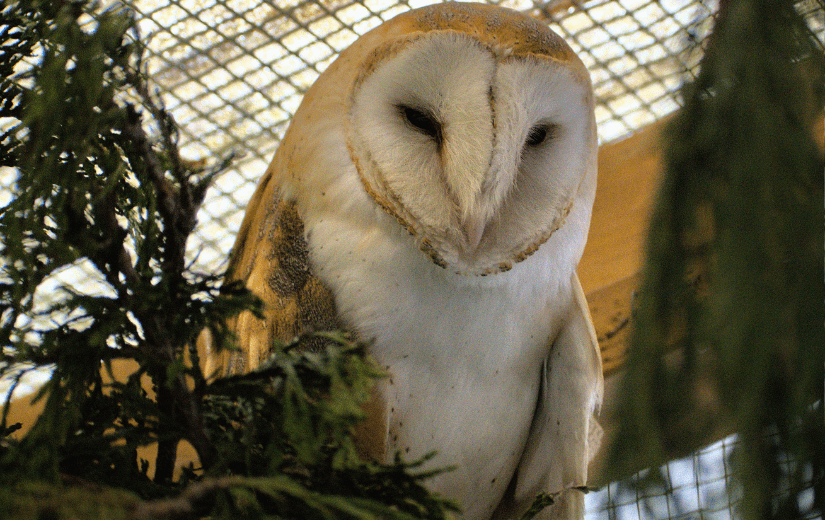
Coyotes
February is the time for courting, and not only for humans! Coyotes are monogamous and mate for life, working together to hunt, den and raise their pups each year. You may see and hear coyotes courting as they search for a suitable site to raise their young. Don’t panic if you do, read what to do if you see a coyote, and keep companion animals leashed to minimize the risk of any conflicts.

Beavers
Did you know beavers mate for life too? Well, I’ll be dam-med! Beavers live in small family units, starting with a mated pair and their kits. Each year, the colony normally consists of the two adults, any newborn kits, and the yearlings born the year before. Beavers will stay with their parents learning everything they need to survive on their own, while helping raise the new young kits. Fully mature at two years, the young beaver will then leave the family and “chews” a mate of their own.
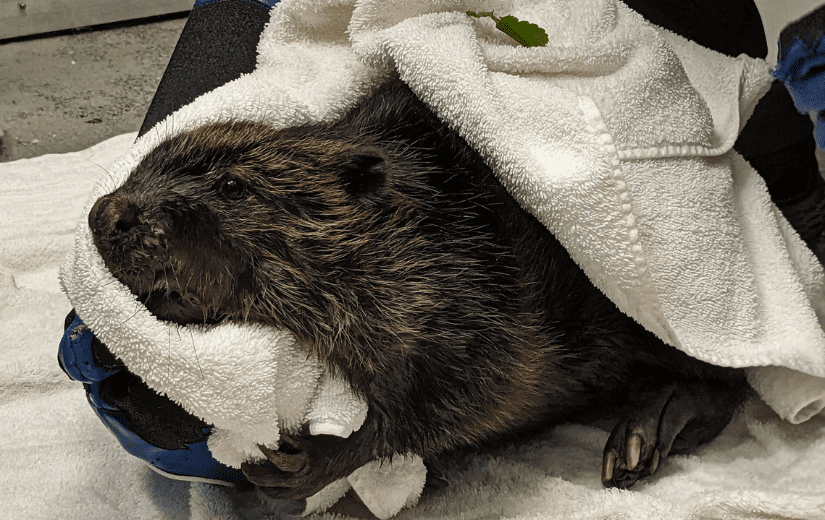
Wild ARC doesn’t often see young beavers in care, but when we do, they often stay for long periods of time and need specialized professional care to get them back home to the wild. An adult female beaver, similar to the one pictured above, was brought to Wild ARC in 2021 after bullets were found in her face and body. After a month of specialised treatment and time to recover from her injuries, she was ready to return to her family and natural habitat for a second chance at life.
Canada geese
Not only do Canada geese mate for life, they’re also dedicated co-parents. The male and female take turns with all their parenting duties, including protecting their nest, incubating the eggs, finding food, and co-parent the young goslings for up to 9 months. Practice makes perfect, and their success rate as parents increases every season they stay together.

Geese will also help co-parent with other family groups – take a “gander” and you might see large groups of adults and goslings grazing together in the summer. Because of this parenting style, geese are much more willing to accept new goslings into their group. To a wildlife rehabilitator, this is important because this means it may be possible to incorporate orphaned goslings into other wild families. Every year, Wild ARC receives orphaned goslings that typically spend a few days at the facility before the Wild ARC team is able to find a goose family with goslings of the same size to reintroduce the orphans to be raised together.
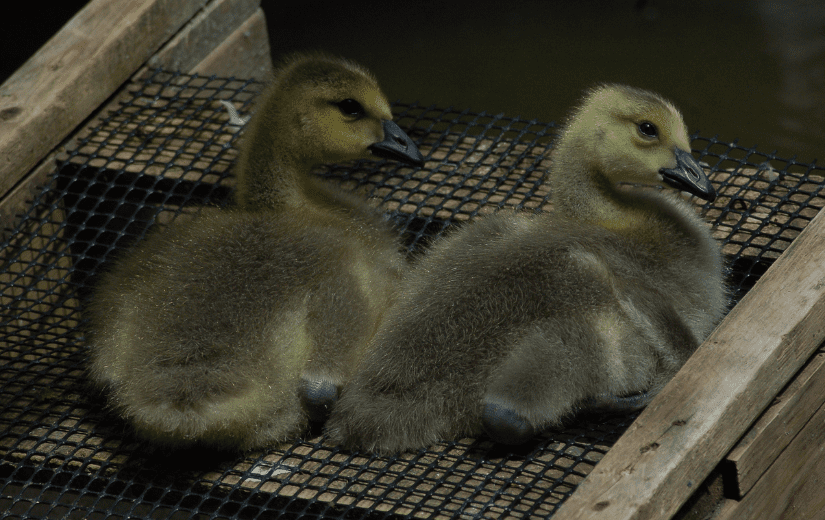
Bald eagles
Bald eagles also mate for life, which is a long time for birds who live up to 20 years or more! These are birds who grow old together – returning to the same nest site year after year. Avid birdwatchers often know the local pairs of eagles, and look forward to their return each year.
Eagles build impressive nests out of a series of large branches. The nests have to be both deep and wide enough to fit the large adult birds and any growing eaglets. Not only do they return to the same nest, they also add to it each year. The ever-growing nest is truly the symbol of a strong partnership. One nest in Ohio was used for more than thirty years – measuring nearly 4 m tall, and estimated to weigh two tonnes!
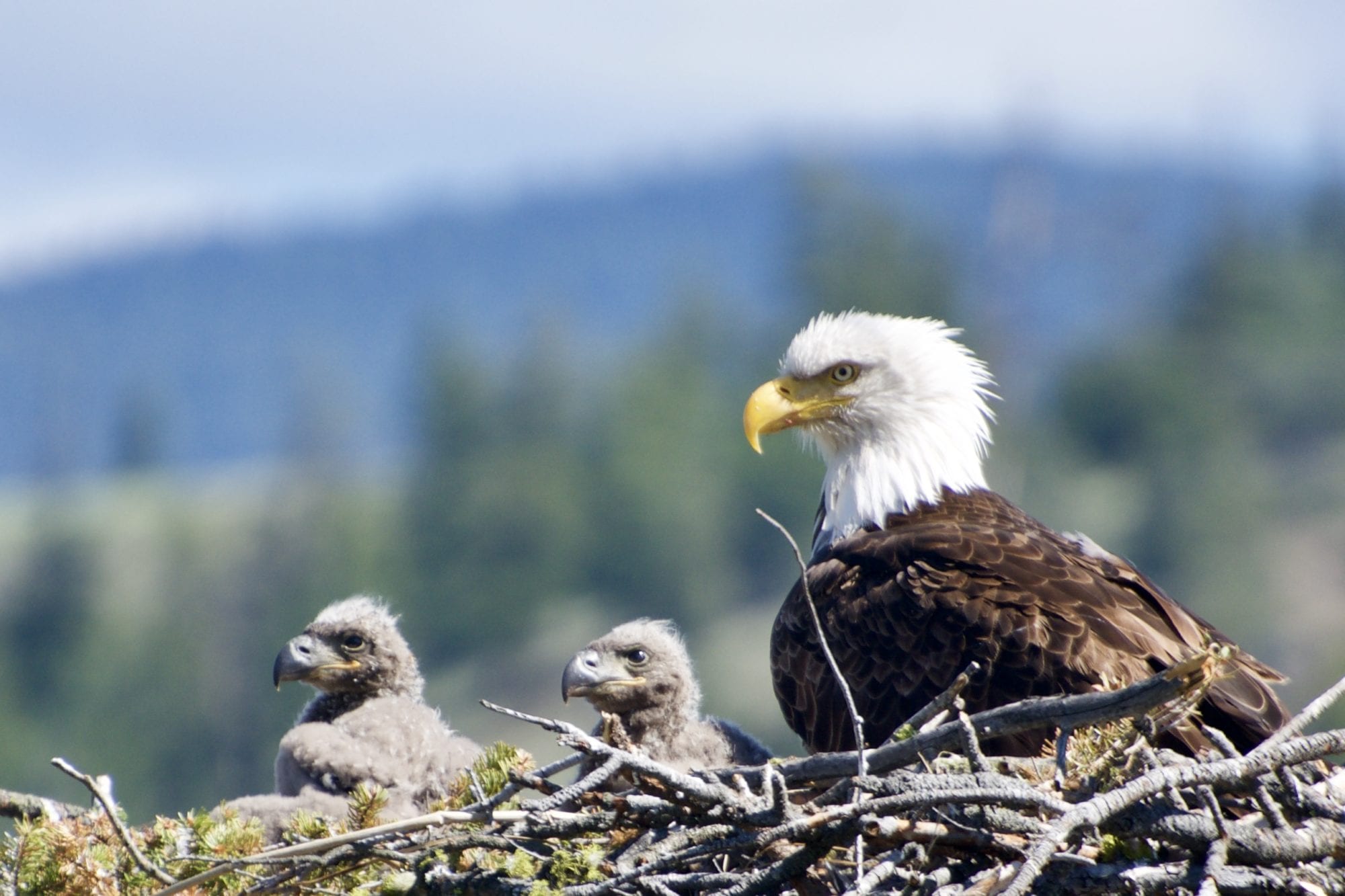
Watching an eagle courtship display is equal parts awe-inspiring and nerve-wracking. To impress each other, the male and female will soar high into the air, and then engage in a stunning display of locking talons and spiralling dramatically towards the ground. Sometimes, this can even result in injury.
This may have been the case for a bald eagle that was admitted to Wild ARC in 2022. We’re not sure if they were in a territory dispute with a rival, or a courtship display with a potential mate, but their injuries were consistent with a crash landing. Bald eagles are one of the largest patients that Wild ARC admits, but our expert rehabilitators were ready. After their wounds had healed enough, the eagle took some time stretching their wings and testing their flight muscles in our large outdoor flight pen. After just a short while in care, they were ready to return back home to the wild and maybe give courtship another chance!
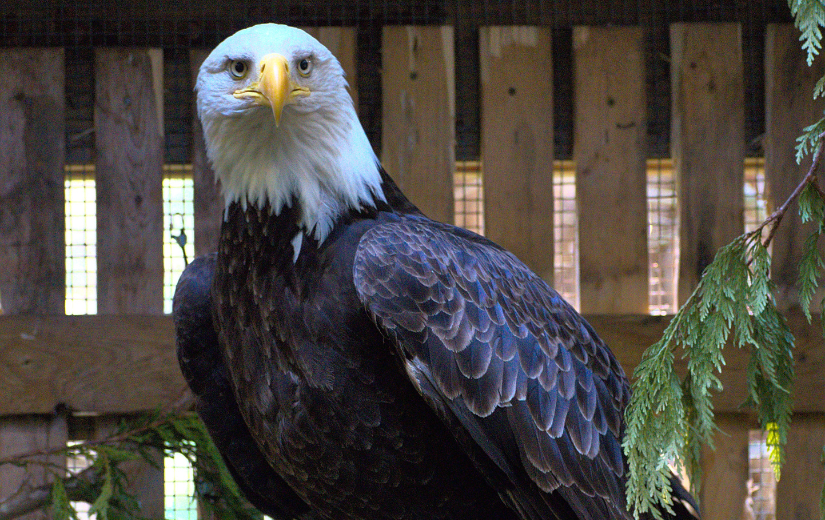
Subscribe to WildSense e-newsletter
Want to receive more stories like this, right in your inbox? Subscribe to WildSense, our bi-monthly wildlife newsletter.
The BC SPCA uses your personal information to update you on our work for animals as well as for advertising and analytics purposes. More information on uses and how to opt-out can be found in our Privacy Policy.
